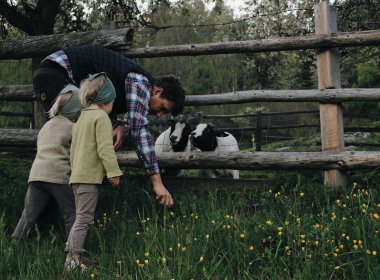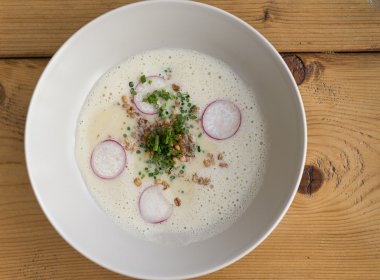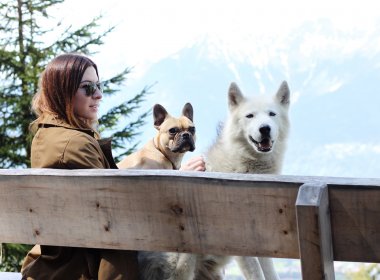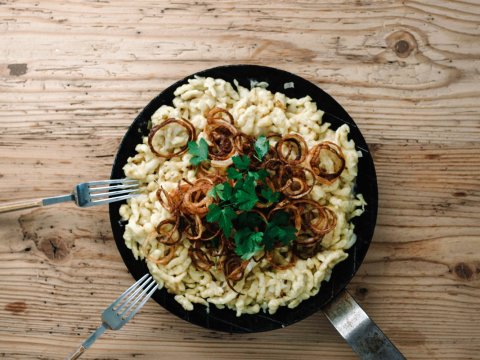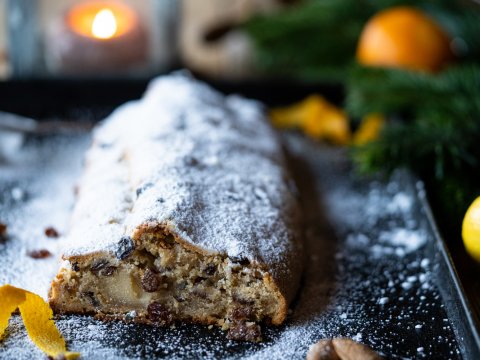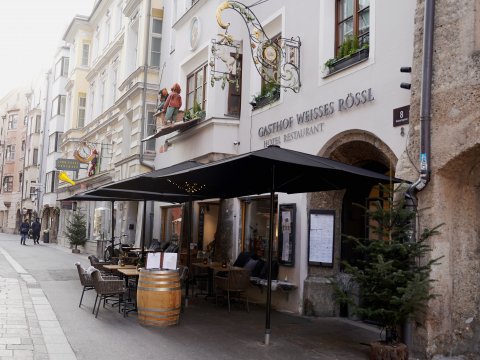Beyond Meat – A Vegetarian Revolution in the Zillertal Valley

Peter Fankhauser from the village of Kaltenbach in the Zillertal Valley has launched his own personal cooking revolution. It goes by the name of "Guatz’Essen" and is a restaurant serving only vegetarian and vegan dishes – nothing special in London or Berlin, but a bold step in meat-loving Tirol. All the ingredients used in the kitchen are sourced from his own permaculture garden. While the vibe is similar to what you will find in some of Austria's hippest dining locations, the prices at Guatz’Essen are very down-to-earth. We met up with the man himself to find out more.
There’s a saying in German: „Das Auge isst mit“. Roughly translated it means „you also eat with your eyes“. It underlines the importance of that first impression you get when the plate is set down on the table in front of you. In Peter Fankhauser’s restaurant Guatz’Essen, your eyes do an awful lot of eating – each dish is a miniature work of art full of colours and textures reflecting the season. Spring, for example, is bursting with greenery and shoots; summer brings all the colours of the rainbow; autumn and winter are dominated by shades of orange, yellow and brown. Throughout the year the five-course tasting menus at Guatz’Essen have three things in common: they are delicious, fun to eat and leave you both satisfied and energised. The names of the dishes are simple and to-the-point: „Pumpkin, Green Onions, Potatoes, Parsnip Chervil“, for example, is an autumn classic bringing together four ingredients commonly found in Tirol as summer slowly draws to a close.
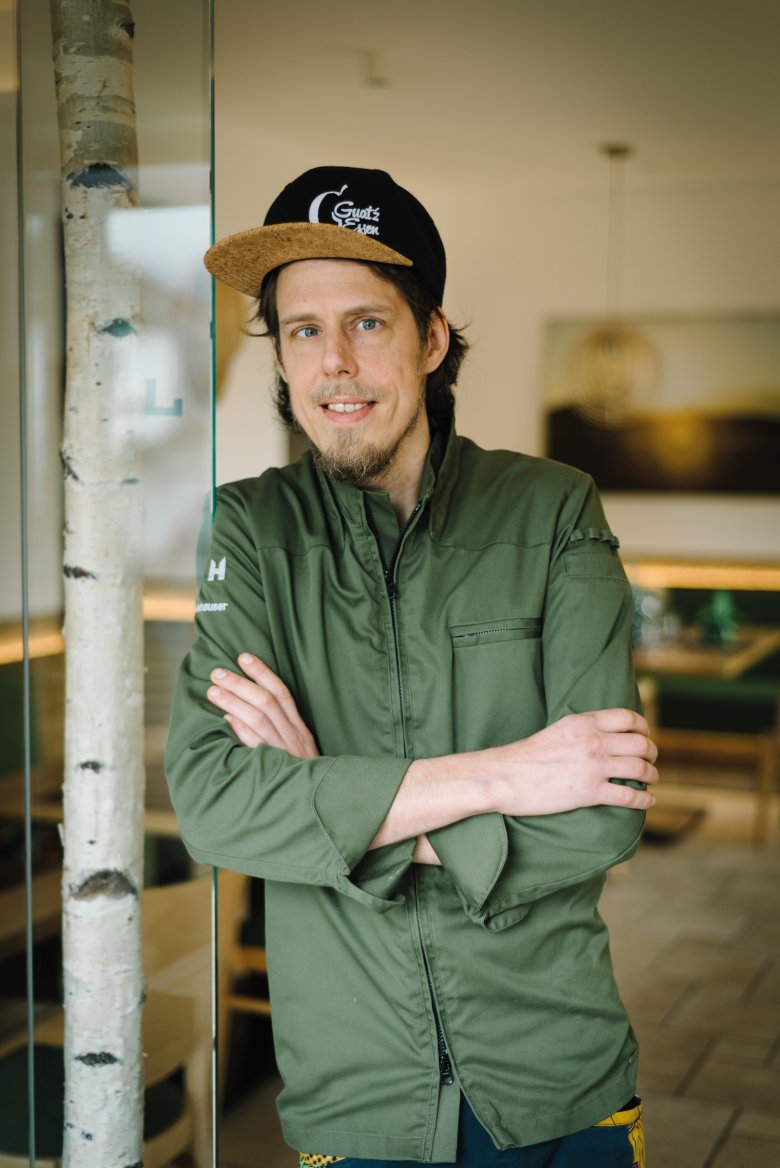
The chef
Peter Fankhauser, 42, has deep roots in the Zillertal Valley. Having grown up there, he knows the local cooking scene like few others. His approach to cooking is very much an experimental one – Fankhauser loves nothing more than playing around with ingredients and flavours, mixing and infusing until he finally comes up with something he is ready to share with his guests.
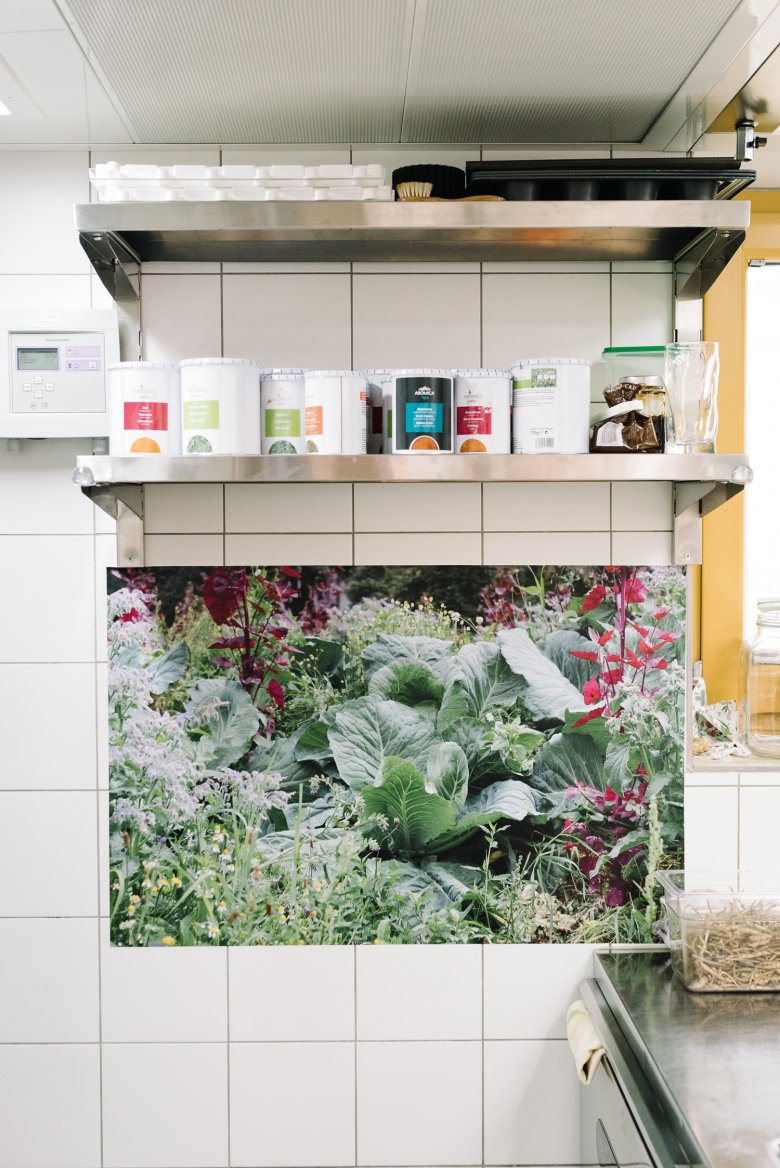
For many people the success of the Guat’z Essen concept came as a surprise. A vegetarian restaurant in the Zillertal Valley? Locals were more than a little sceptical to say the least. After all, this is a region known for dishes full of meat and animal-based produce. An unlikely place, then, for a restaurant serving vegetarian and vegan dishes only. That may be true, but Austria’s cooking scene has been moving towards plant-based nutrition for a while now. One of the pioneers was Nico Curtil, whose popular vegetarian restaurant Chéz Nico in Innsbruck broke new ground in Tirol. On the other side of the country, chef Paul Ivic from the Tirolean village of Serfaus is currently cooking up a storm at Tianwas in Vienna using veggi ingredients only. So, I suppose you could ask, what is so revolutionary about Guatz’Essen? And why is is worth a visit?
In the dining room
The restaurant is located in the village of Stumm, between the Ziller river and the Stummerberg mountain. Upon entering you can look forward to a warm welcome as you are led to your table by the only member of staff employed by Peter Fankhauser. The atmosphere inside is light, modern and inviting. In the centre of the room stands an open kitchen, where Peter Fankhauser puts the finishing touches to his dishes before they are served to guests.
A trained patissier and chef, the 42-year-old also just happens to be one of the best long-distance trailrunners in Austria. In 2013 he was the fastest Austrian athlete to take part in the Vienna City Marathon. In 2014 and 2016 he completed the punishing Transvulcania and Transalp trailrunning events. One of his idols from the world of running is Haile Gebrselassie. But what about cooking idols? „I like chefs who embrace modern cooking and never stop pushing themselves to get better.“ Over the years he has worked for and with some of the best chefs in the world, before ultimately coming back home to the Zillertal Valley to realise his dream of opening his own restaurant. He began his career at a Michelin two-star restaurant in the United States, then spent a while working under the legendary Reinhard Gerer at Korso in Vienna, one of Austria’s top fine dining locations. His next stop was Ischgl, where he joined Martin Sieberer in the Paznauner Stube. In 2008 he returned to Vienna, first working for Christian Petz at the Palais Coburg, then moving on to the world-famous Steirereck. His culinary journey then took him back to Tirol, to the Trofana Royal Ischgl, where he teamed up with Martin Sieberer once again and helped him write the cookbook „Von süßen Sinnen“ („Sweet Senses“). Finally, in 2013, it was time for Fankhauser to return home. Together with friends he founded the association Guatz’Essen, which translates as „Good Food“, and created his own permaculture vegetable garden in the Zillertal Valley – a challenging project considering the often cold and snowy alpine climate in Tirol. However, the hard work ultimately paid off and the garden produced enough potatoes, cucumbers and other vegetables for them to set up a small shop in the village to sell their produce.
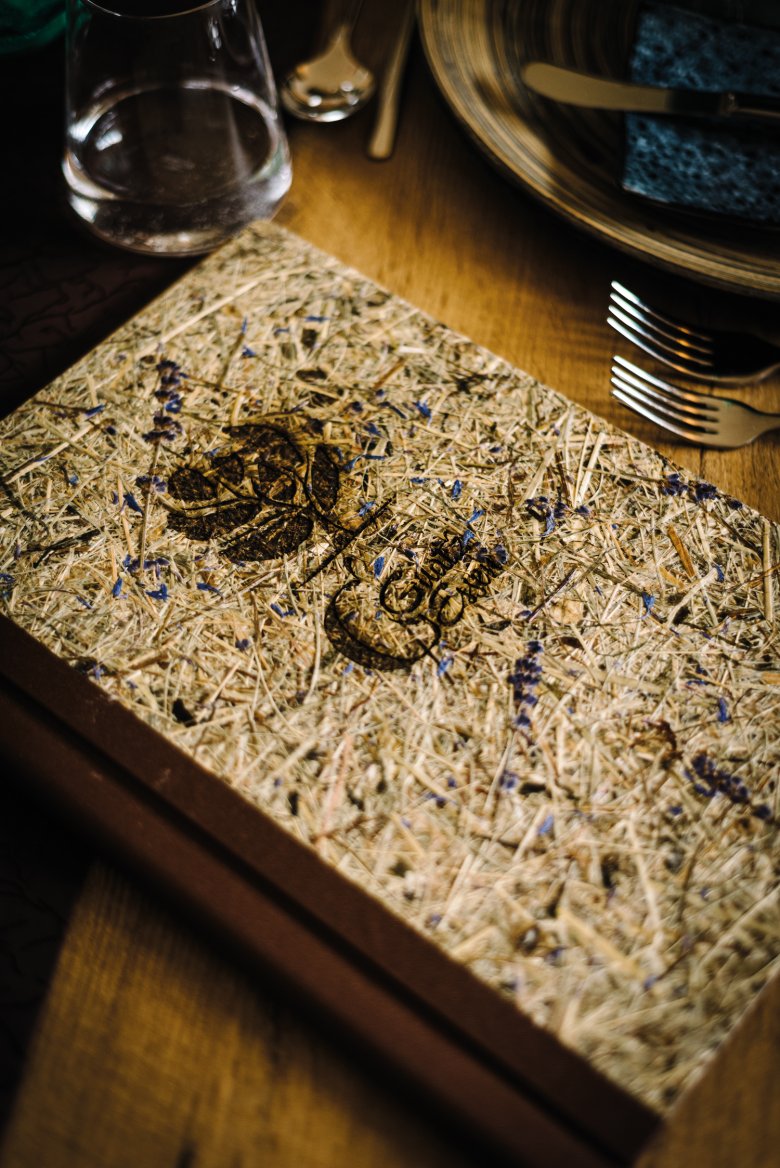

For Fankhauser it was a chance to learn as much as possible about plants. „In the past we were too quick to throw away roots, stems and leaves. The more I know about plants, the more I can use,“ he says. This approach is very much in line with the nose-to-tail cooking trend practised by many chefs these days in an attempt to use as much as possible of the animal, including innards, tongue, sweetbread and diaphragm – things which used to be thrown away. When it comes to plant-based cooking, nose-to-tail means leaf-to-root, i.e. means making the most of everything a plant has to offer. For example, the flowers of the rhubarb plant can be cooked in the pan. Peels, skins and other leftovers can often be used to make delicious stocks. Radish leaves can also be served in salads.
In the garden
Guests who visit Peter Fankhauser’s permaculture garden – located next to the restaurant – before or after their meal are often surprised to find all kinds of different plants growing together. He and his gardener Patrick Sedlazek know every sqaure metre of land and can see the structure behind what appears to be a wilderness of greenery. Fankhauser’s garden covers around 800 square metres and provides almost all the ingredients he needs for his restaurant. The „permaculture“ approach to gardening means no chemicals or pesticides. And while organic farmers are allowed to use environmentally friendly methods of plant protection, in the world of permaculture even these are forbidden. Organic fertilisers and mulch are used to keep the soil as natural as possible. It’s also about diversity. Fankhauser’s garden is a Noah’s Arc of plants, including many threatened species. Instead of humans, it is nature that is in charge here. „Instead of separate individual beds we have lots of different vegetables growing next to each other. That means they can exchange important vitamins and minerals which they need to thrive,“ Fankhauser explains.
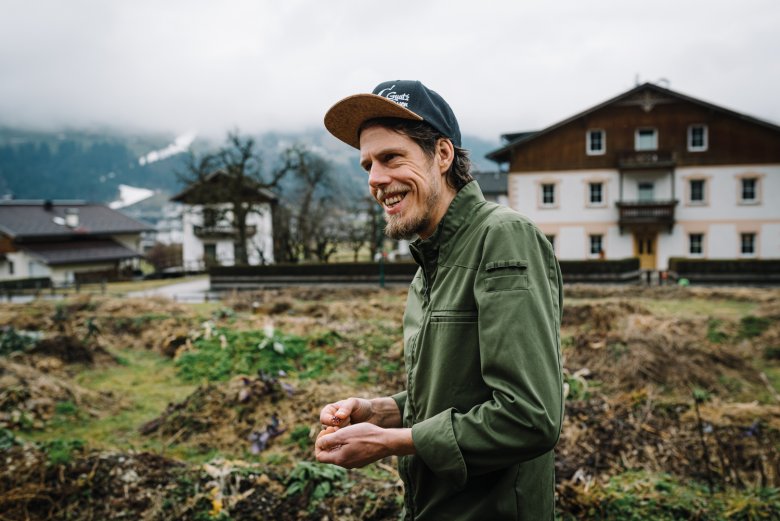


In spring and summer the garden is a lush, green paradise: mountain spinach (red and green), rocket, wasabi rocket, various types of lettuce and, dotted in between, countless varieties of herbs and flowers. „Permaculture means we plant the seeds, give them plenty of water and leave the rest to nature,“ explains Peter Fankhauser. This nature-first principle extends to the preparation techniques used in the kitchen. For example, Fankhauser is convinced that many of the most important nutrients are contained in the skin. That is why he tries wherever possible to avoid peeling vegetables, though in some cases the skin contains bitter substances would ruin the flavour and therefore need to be removed. „The Jerusalem artichoke, for example, is a vegetable where it is important to use the skin as well – it adds to the taste and contains lots of healthy nutrients.“ Cooking Jerusalem artichokes with the skin on causes them to turn from white to a greyish colour – not particularly appetising to look at, but the taste makes it all worthwhile.
In the kitchen
Returning from his garden with all manner of vegetables and herbs in hand, Fankhauser has the same broad smile on his face that he has when crossing the finishing line of a race. His eyes sparkle with excitement as he sets down his harvest and gets to work sorting, brushing and cleaning. Behind him are glass jars containing carrots, mushrooms and parsnips, all left to ferment for months. In early winter he often uses the last pumpkins of the season to create chutneys and pestos. During the cold months of the year the garden is left to rest and recover. The harvest has been brought in, with everything not needed immediately preserved in jars and glasses.
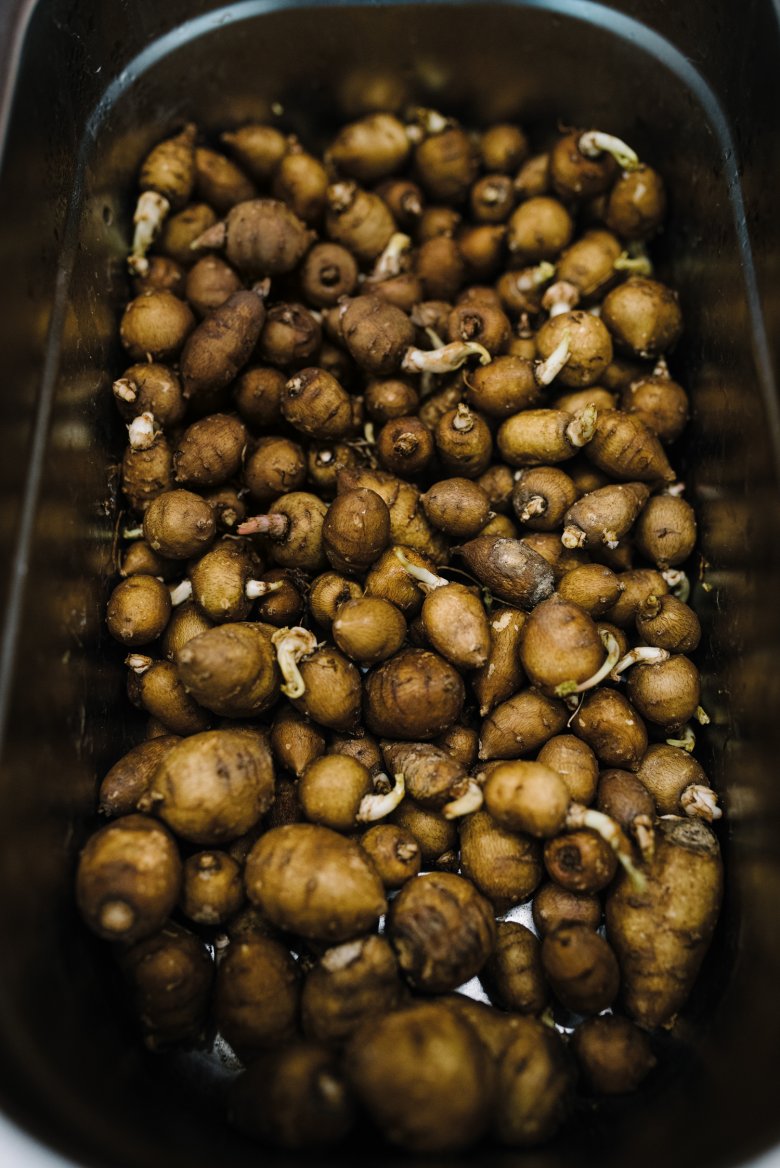
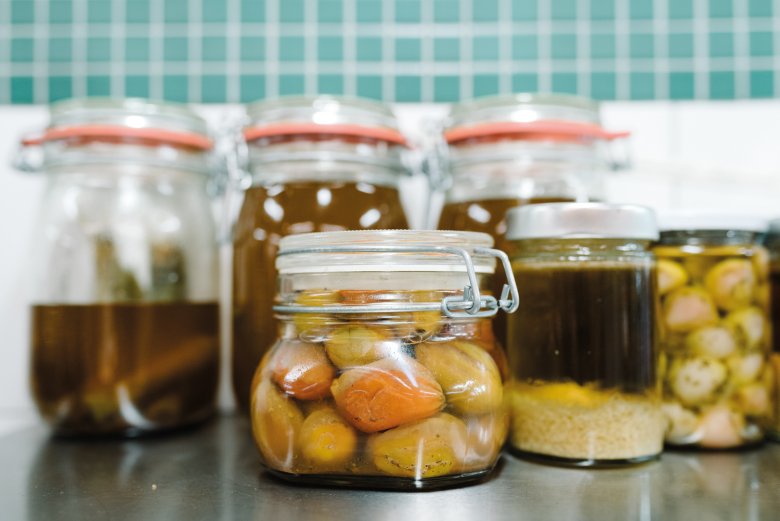

Guatz’Essen has not yet been listed in restaurant guides such as Gault&Millau, but that’s just fine by Peter Fankhauser. Flying under the radar means his restaurant can remain an insider tip for a little longer. Most diners come from the local region – tourists are few and far between. Indeed, awards and accolades can sometimes even have a negative effect: people who would otherwise visit the restaurant are scared off by ideas of a stuffy atmosphere and high prices. Guatz’Essen is the exact opposite.

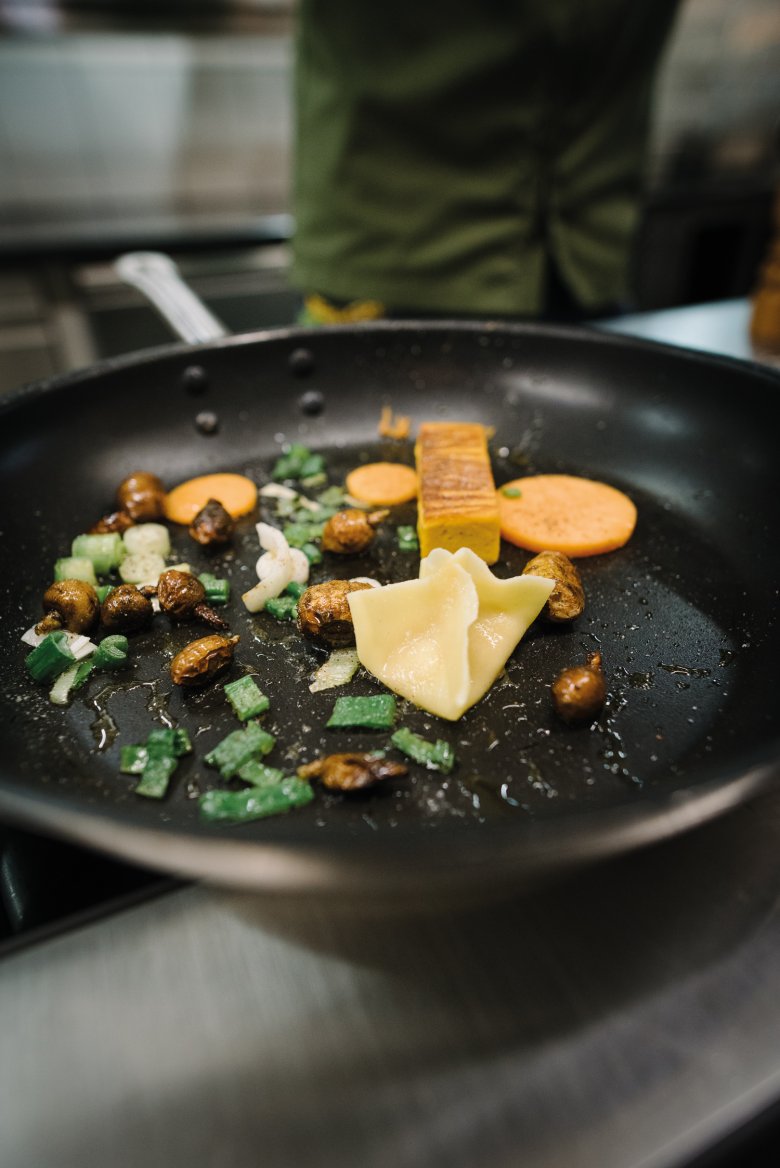
For all those with enough space left for a dessert, trained patissier Fankhauser has a few sweet treats up his sleeve: homemade pralines from local chocolate produced by the legendary Sepp Zotter, filled with cranberries, advocaat or essence of mountain pine. „Anyone who leaves the restaurant with the taste of my pralines in their mouth is bound to be back,“ he says with a smile.












